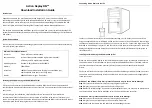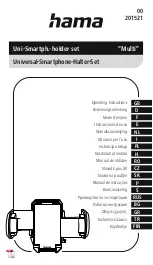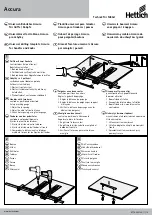
18
User's Guide ADI-648 © RME
11. Special Modes
11.1 MADI to MADI Converter
MADI has been used for quite some time now and therefore not all interfaces from different
manufacturers are compatible with each other. An AMS Neve Logic DFC e. g. only accepts the
56 channel input format and when a 64 channel signal is applied, the whole input is muted. We
leave it with only this example.
The ADI-648 can serve here as a perfect link, because its MADI input can read any input for-
mat. The ADI-648's MADI output can be set to 56 channel or 64 channel output mode by apply-
ing an ADAT signal to ADAT input 8 (see also chapter 7.2). After selecting 96K FRAME there
are also 28 or 32 channels in a 96k Frame mode. With this option, the ADI-648 can translate a
double wire MADI signal (2 single speed channels contain one double speed channel's data)
into a single wire double speed signal (1 channel contains 1 channel's data at double sample
rate), or vice-versa.
Thanks to an integrated matrix router, no further cabling has to be arranged for (except for
activating or deactivating of the 64 channel mode), since all MADI input signals can be sent to
the MADI output directly via the router.
In short: the ADI-648 makes all MADI interfaces existing at the moment compatible to each
other in the easiest way.
11.2 ADAT Patchbay and Splitter
The integrated Matrix Router makes the ADI-648 also an interesting 8 port ADAT patchbay. No
matter if different devices are to be connected with each other, or one ADAT signal has to be
sent to multiple ADAT receivers, the ADI-648 can achieve this by simply pushing a button.
When the MADI input and output are connected directly (loopback), the user can easily switch
between a 1:1 connection and a freely defined router/splitter setting.
11.3 MADInet
MADI is much more flexible and powerful as commonly known. To better make clear what
MADI realy is – a kind of audio network – we introduced the term
MADInet
. The main point to
know is that the MADI input signal is completely rebuild before it is sent to the MADI output. A
clock with active jitter suppression (like SteadyClock) provided, numerous ADI-648 can be
daisy chained. The input signal can be passed on in different ways using the matrix router. And
when build as as ring loop, audio can even be sent back from all ADI-648 to the first device.
The specified length of BNC cable connections is multiplied by the number of used ADI-648, as
each device resends the MADI signal as a newly generated original.
A real world example: Imagine a theme park, where different audio is needed at 20 places far
away from each other. The audio material is send from a computer, playing back 20 different
stereo tracks via a HDSP MADI. The card is connected via BNC to the first ADI-648. This one
(like all others) is set up to pass all incoming audio 1:1 to its MADI output, so that the audio is
sent directly to the next ADI-648. At the same time the audio is available at each unit using the
ADAT optical outputs. The distance between the units is more than 50 meters. The last ADI-
648 is connected with the HDSP MADI again, as each ADI-648 can also be used to insert sig-
nals into the loop ( for example surveillance microphones). MIDI transmission also included.
Fascinating...










































